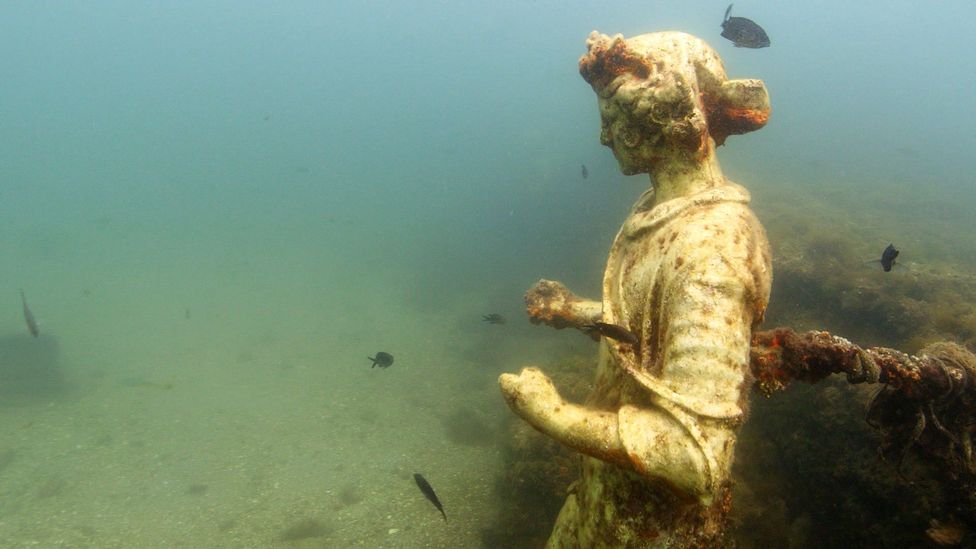Incredible find: massive Roman city submerged in the ocean
About 30 meters to my right, thick, grey-white clouds of steam rose into the sky. Somewhere between where I stood and there, the earth turned from solid and cool to boiling and viscous. Wherever that exact change happened, I wanted to make sure I was not too close. “Yes, yes,” said Enzo Morra, my volcanologist guide for the day, already climbing the hill on the other side of the wooden slats before me. It’s a very dangerous place.
I carefully stepped onto one piece of wood and then the next, feeling the solid ground beneath my feet. As I climbed the hill and reached the top, I saw the source of the steam: a bubbling pool of dull gunmetal-grey mud, reminiscent of the contents of a witch’s cauldron and very loud. The air was heavy with the smell of sulfur.
“Welcome,” Morra greeted me, “but be careful – this place is very dangerous. It’s even more dangerous than Vesuvius.” I laughed nervously. “I wish you had told me that when we were over there. Why are you telling me this now that we’re here?”
We were overlooking one of the fumaroles of Campi Flegrei, known in English as the Phlegraean Fields. One of 20 known “supervolcanoes” on the planet – capable of erupting with a volume thousands of times stronger than an average volcano – Campi Flegrei commands less notoriety than Mt Vesuvius, just 30km to the west.
But that is largely down to luck. If Campi Flegrei were to blow at maximum capacity today, it would make the 79AD eruption of Mt Vesuvius that destroyed Pompeii look like a puppy’s sneeze. Fortunately, Campi Flegrei hasn’t had a full-force eruption in thousands of years.
That isn’t to say it’s impossible. Researchers call the supervolcano “restless”, and there are concerns it is becoming more so. In 2012, the alert level was raised from green to yellow, indicating a need for more monitoring. Most recently, a “seismic swarm” in April 2020 saw 34 different earthquakes.








.jpg)
